Dennis Lin, born in 1976 in Flin Flon, Canada, is a Canadian-Taiwanese sculptor working and residing between Toronto and Kimberley, Ontario. His artistic practice encompasses suspended, standing, and relief sculptures exploring patterns, material nostalgia, and the quest for belonging. Lin’s creative process often involves salvaging materials on the verge of being forgotten or decaying, transforming them into enigmatic works reflecting time, memory, and the hidden stories contained within these objects.
Lin’s most recent project, titled 等你回來 (“Waiting for Your Return”), finds its roots in two deeply personal experiences—a catastrophic house fire in 2021 and a profound sense of familial disconnection. This body of work represents Lin’s effort to fill a void left by these events. By revisiting his heritage and working with culturally significant materials, Lin seeks to rebuild connections to a past that feels increasingly tenuous. A central element of this project is the use of 8,000 kilograms of discarded paper salvaged from his grandfather’s paper factory in Taiwan. Originally destined for disposal, these factory seconds are carefully reworked and preserved by Lin, transforming them into sculptural pieces that serve as a testament to memory and history. This act of reclamation underscores Lin’s intention to protect these materials from the ravages of time and to honor the legacy embedded within them.
Incense plays a recurring role in Lin’s reliefs and mobiles, symbolizing a fragile connection to spirituality that has diminished over generations. Suspended alongside the delicate strands of incense are remnants from the fire—charred children’s books and fragments of charcoal. These objects, once marked by destruction, are now imbued with a sense of hope and reverence, reflecting Lin’s desire to preserve what remains amid loss. At its core, Waiting for Your Return is not only about safeguarding tangible materials but also about grappling with the emotional weight of preservation—the tension between holding on and letting go. Lin’s meticulous practice of collecting and elevating materials that might otherwise vanish highlights this delicate balance.
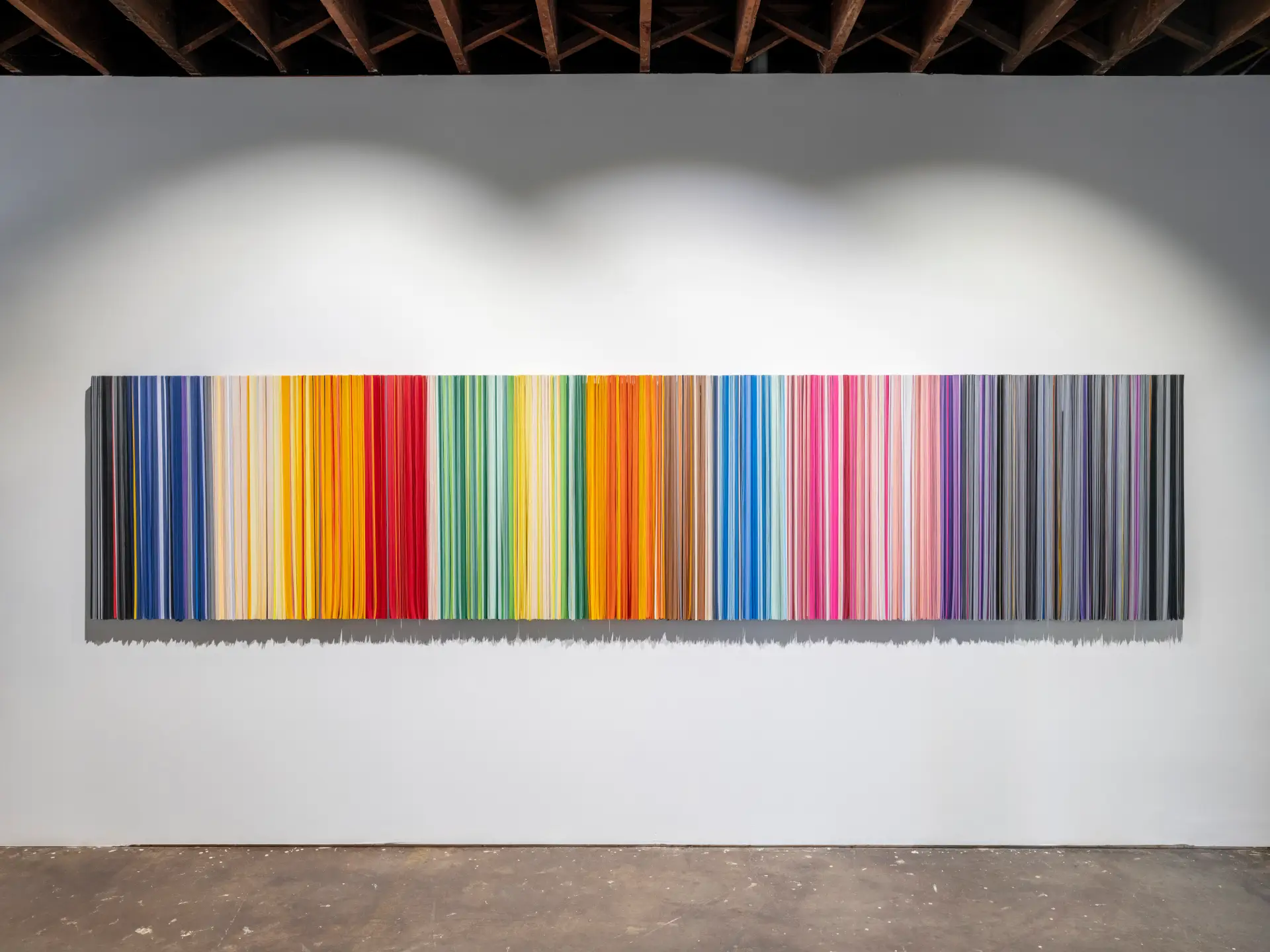

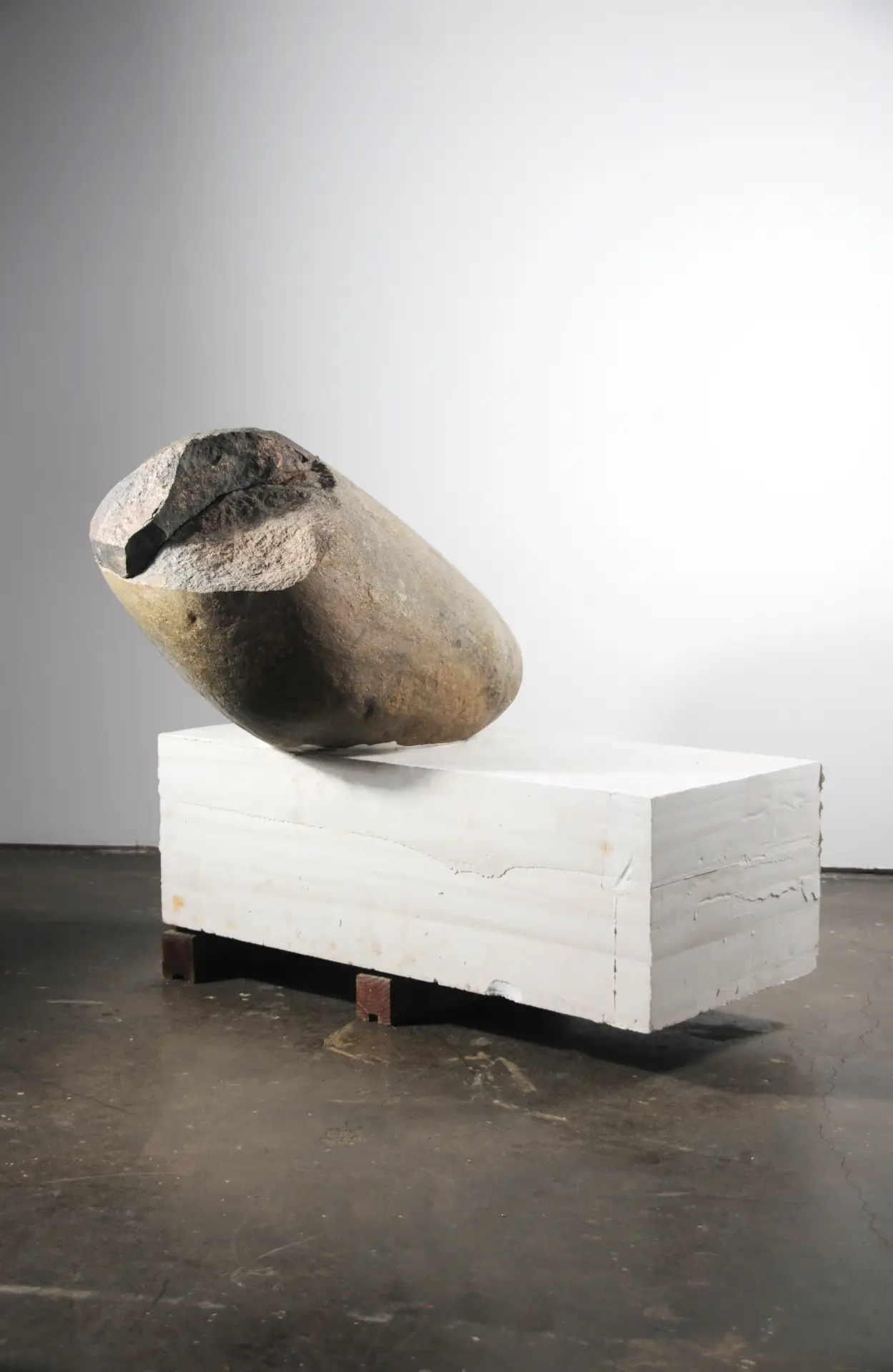
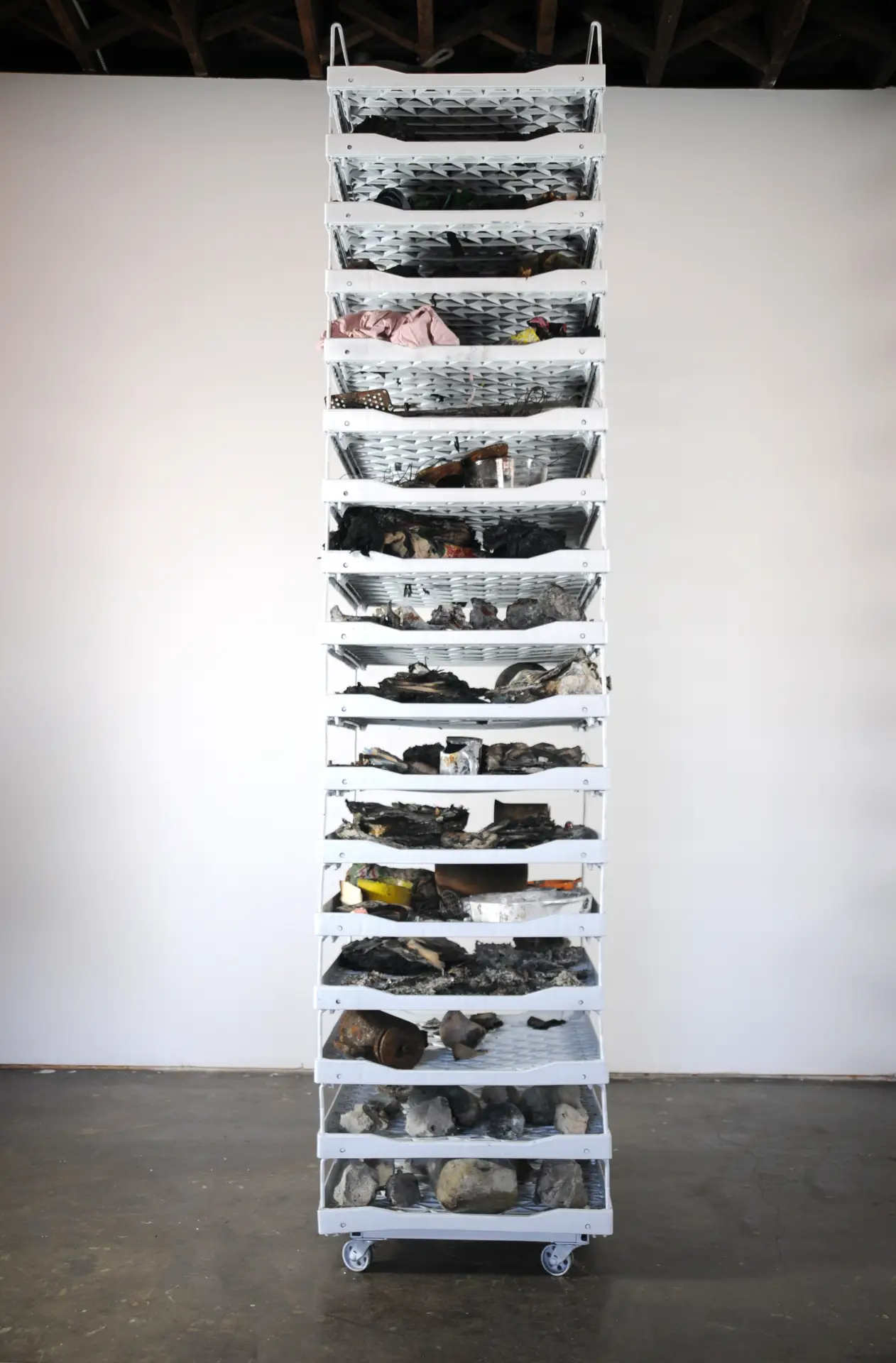
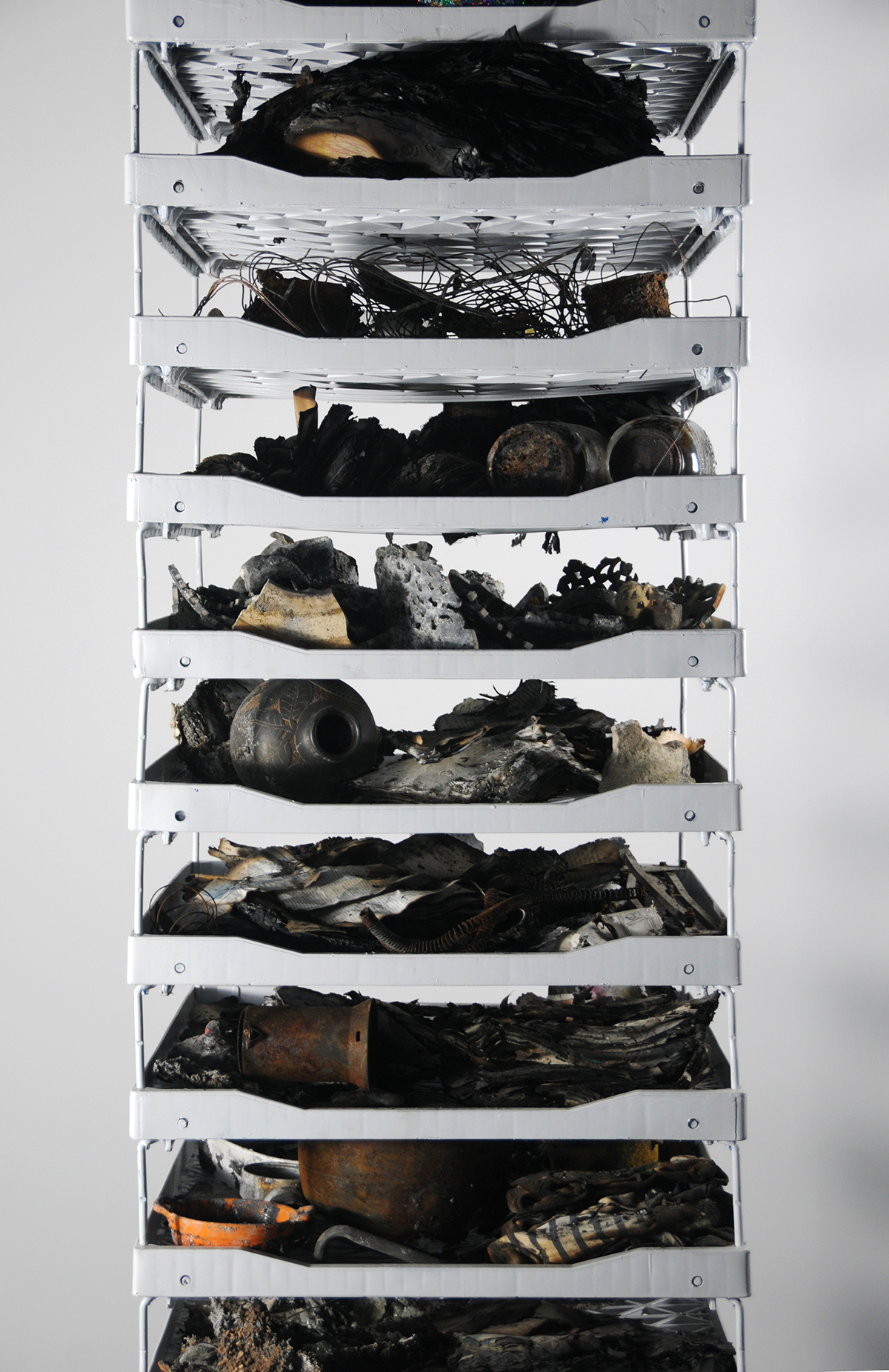
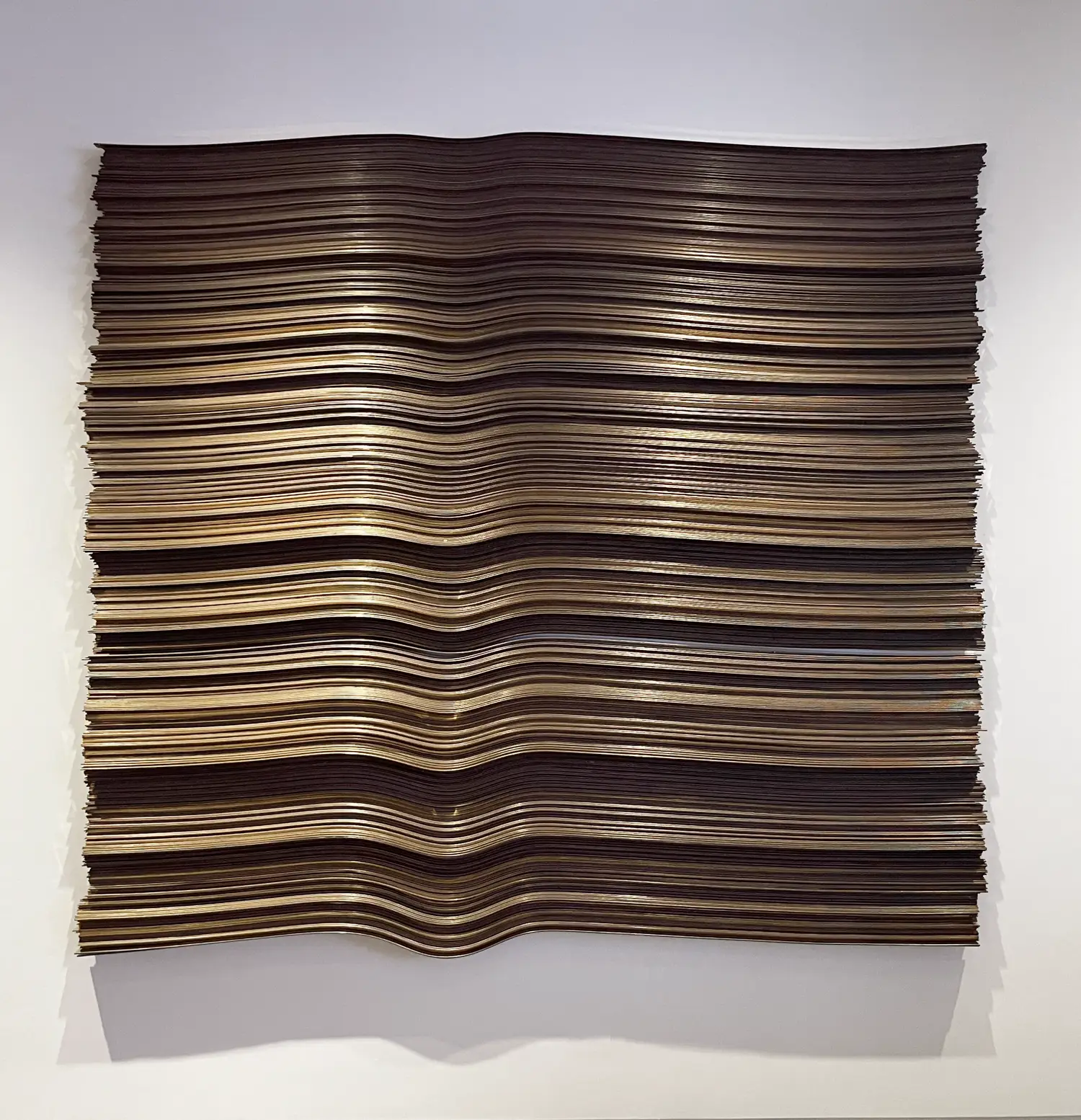
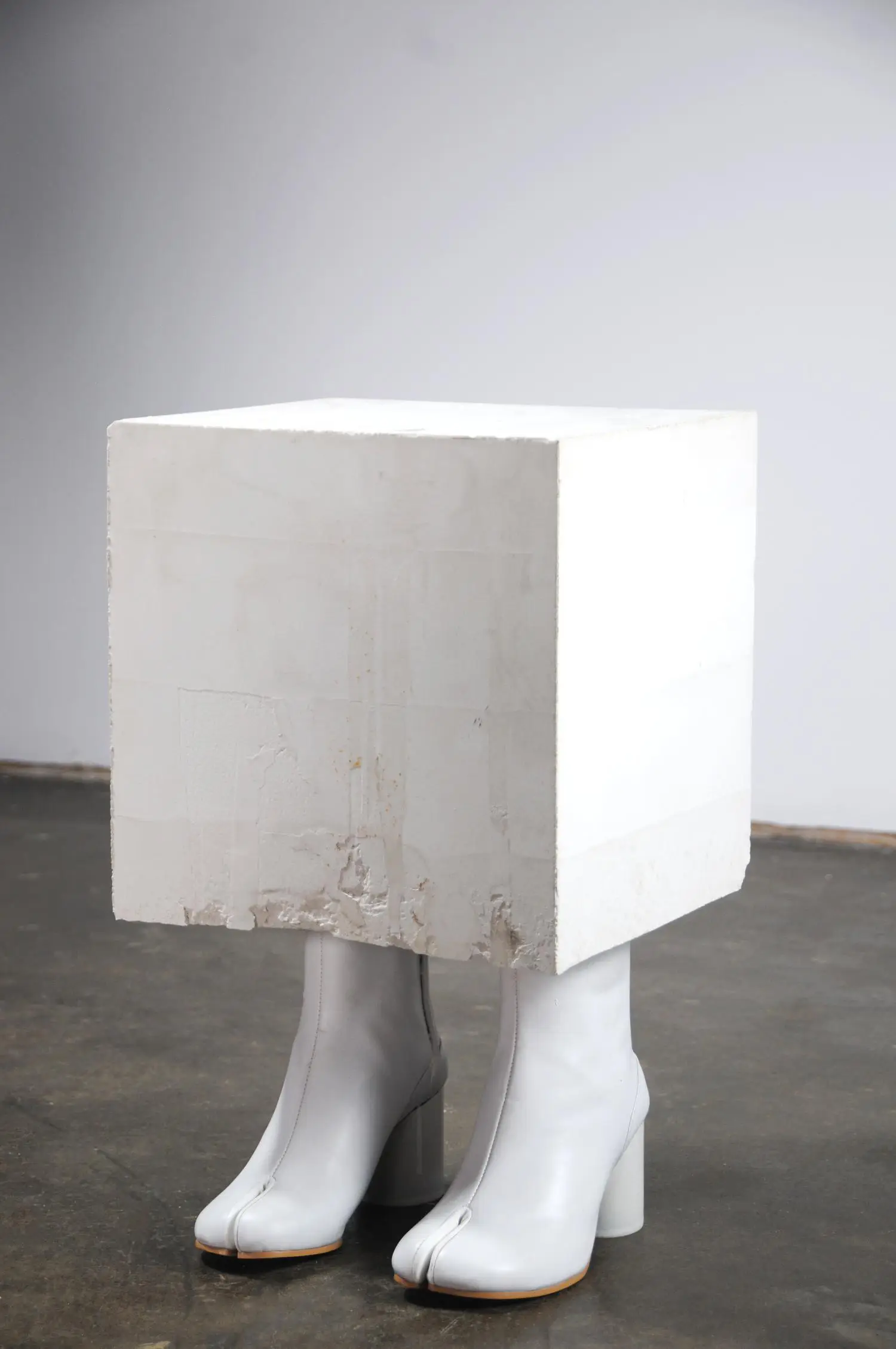
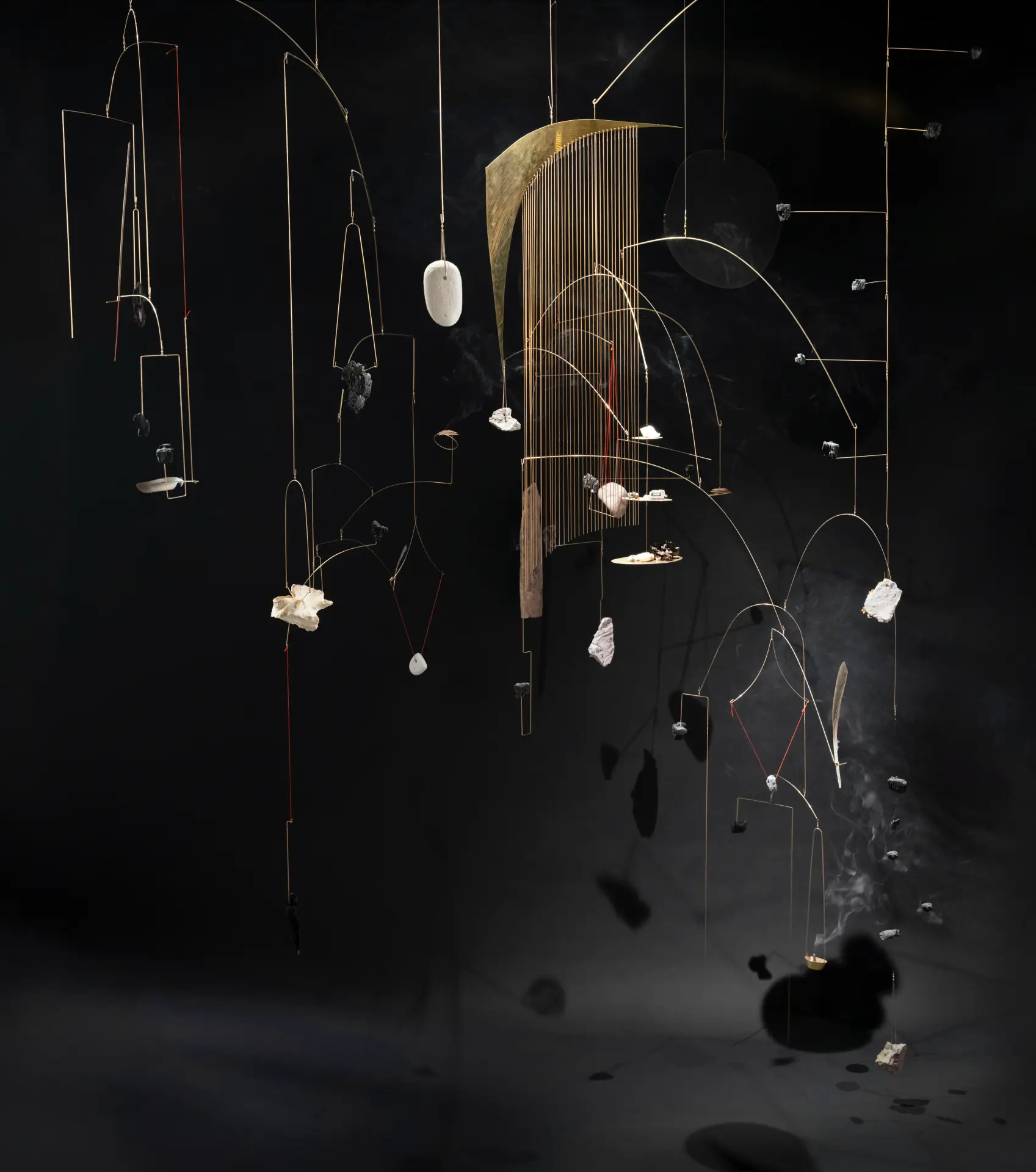
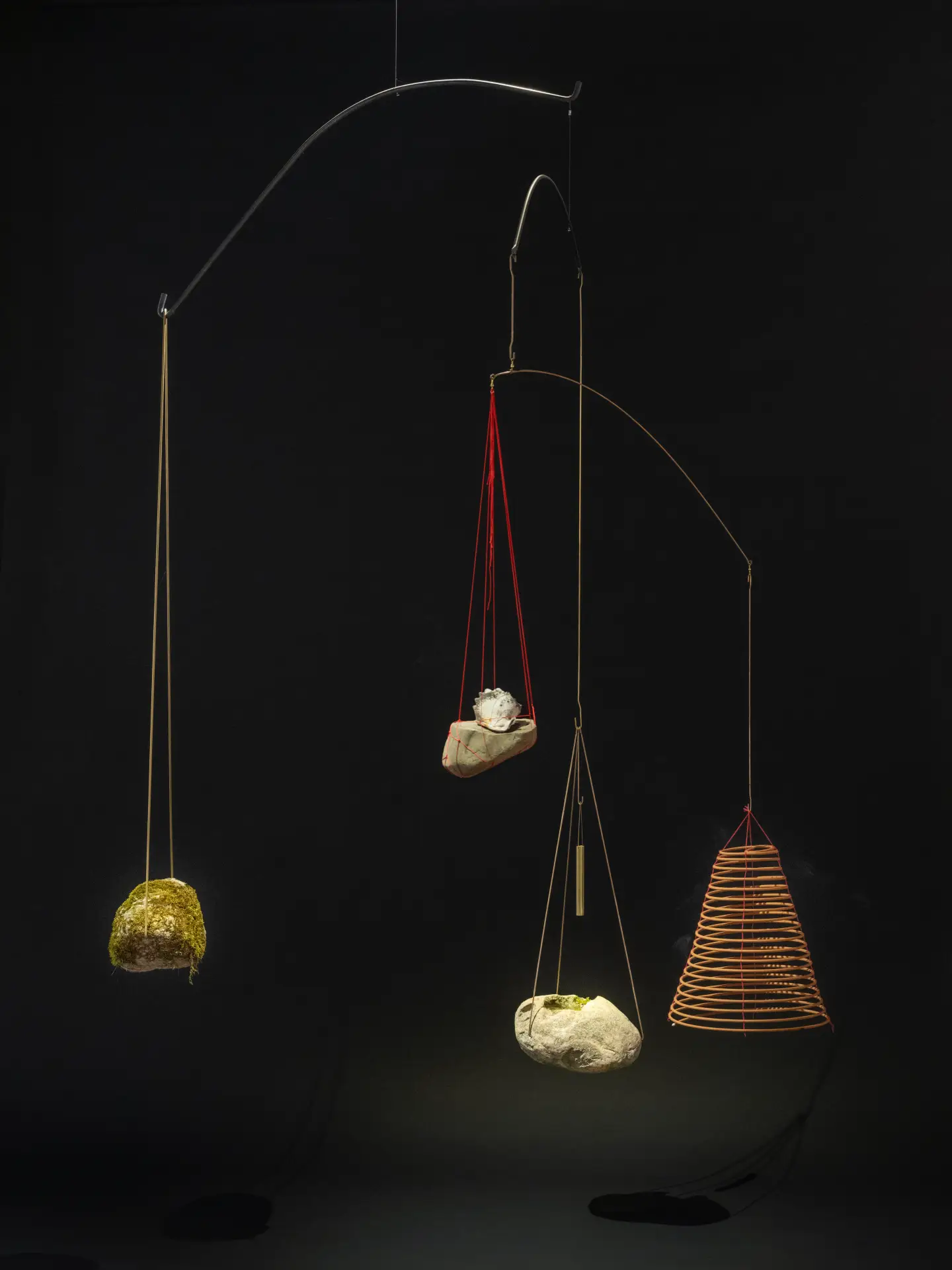

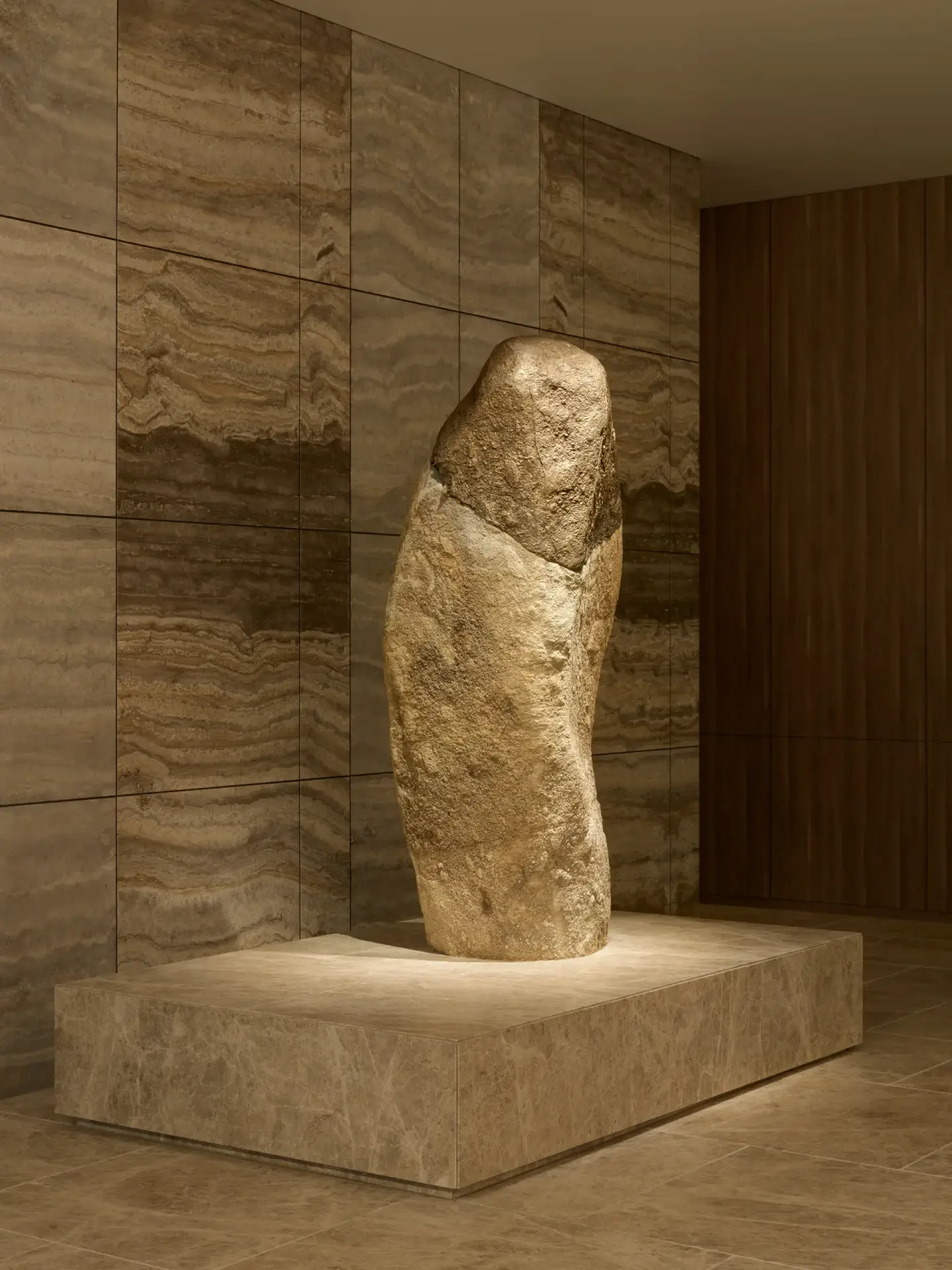
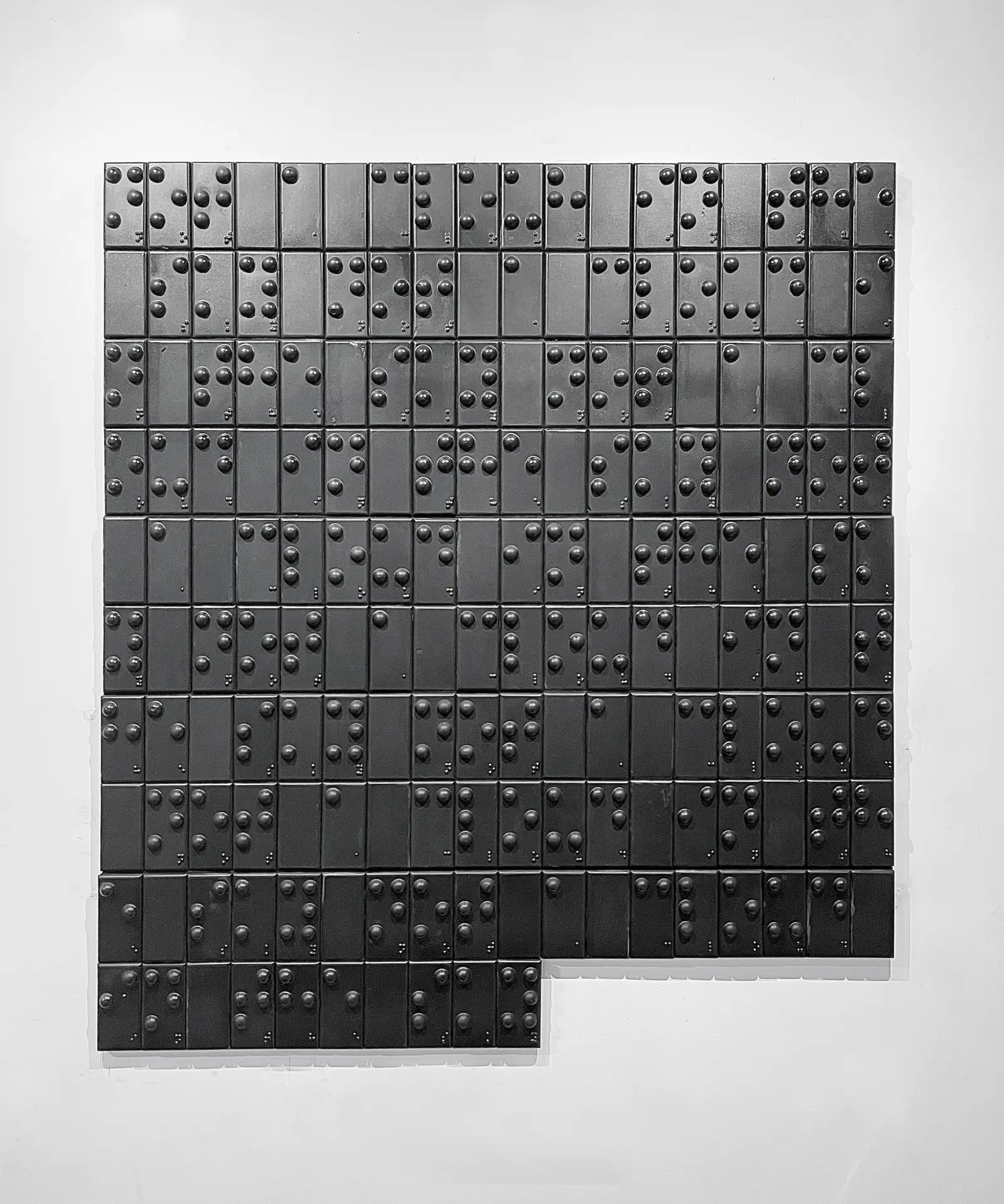
Similarly, in his series I’m Not Welcome, the artist reflects a deeply personal response to the 2021 house fire. From damaged to meticulously repaired, Lin’s sculptures embody his unique process of confronting grief through material reconstruction. Central to the collection are large stones, repaired with bronze caps cast from their original, lost material, symbolizing injury and healing. This methodical practice turns ordinary remnants of destruction into meditative works, blurring the line between collection, processing, and care. A striking element of the series is a 10-foot tower constructed from repurposed Weston bread racks. This towering structure is filled with ashen kitchenware, pools of molten aluminum, petrified electrical wire, and charred fragments of paper and cloth—all remnants of the fire.
The surface treatments of Lin’s works vary dramatically, from rough, granular textures salvaged from the fire’s aftermath to supple layers of women’s goat-skin opera gloves. Some pieces take an analytical approach, cataloging and measuring the fire-born materials, while others adopt a more playful tone. For example, a pair of disembodied white Tabi boots convey a detached sensuality and a delicate flaxen leaf clings to the sharp edge of a fire-scorched stone. These objects serve as both artifacts and poetic gestures, memorializing the remnants of his family home.
Beyond these two most recent series, one encounters sculptures and reliefs throughout his oeuvre. From the monochrome Strata works of masonite forming a metaphor for the layers of history, choices, and journeys, topographic wall sculptures of bent bronze and veneer strips echo the landscapes of Earth, up to steel and wood sculptures balancing between organic and artificial structures. Another notable series of works is his Braille works, which consist of large, tactile tiles that convey sentences. These pieces explore themes of decoding and communication, suggesting both physical interaction and interpretation.

For Lin, his oeuvre is more than an artistic endeavor; it is a personal journey of rediscovery. Through his work, he addresses silent questions about his identity as a Taiwanese-Canadian, bridging a cultural and historical gap in an effort to create something lasting amidst impermanence. By revisiting Taiwan’s history and engaging with its fading legacy, Lin seeks to assert his place within a lineage that risks being lost to time. His sculptures stand as enduring reminders of memory, identity, and the ever-present desire for connection.
For more information, please consult Dennis Lin’s website here.
Last Updated on January 20, 2025


